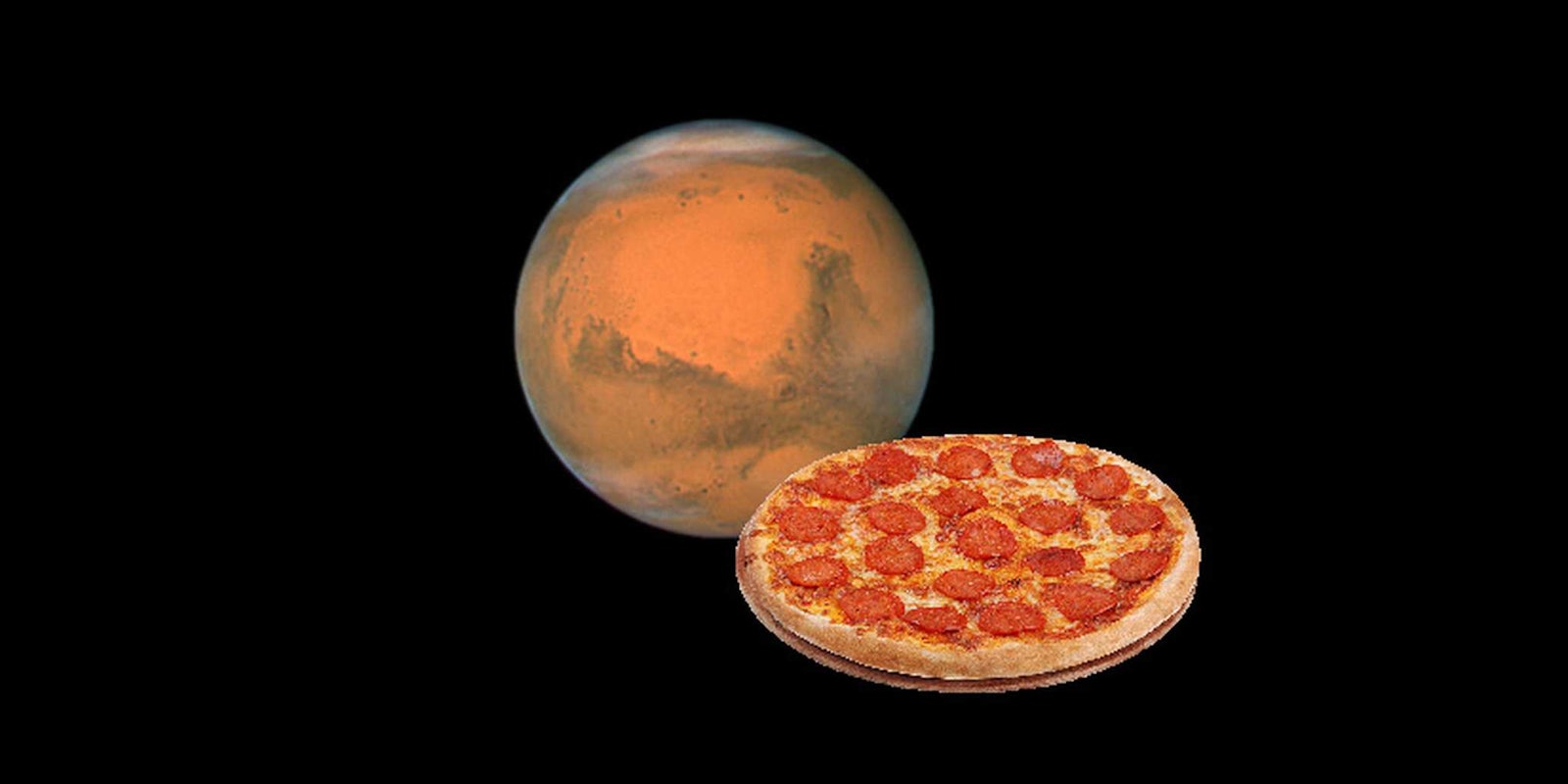Forget deep dish. NASA wants deep space pizza.
Quartz is reporting that the government agency has given a $125,000 grant to System & Materials Research Corporation (SMRC), a company based out of Austin, Texas, that’s building a 3-D printer for food.
The award was specifically given to SMRC mechanical engineer Anjan Contractor so that he can develop a system using his food synthesizer—modeled after the open-source RepRap “Mendel”—to print food for astronauts embarking on long missions.
“Long-distance space travel requires 15-plus years of shelf life [for food],” Contractor told Quartz. “The way we are working on it is, all the carbs, proteins, and macro and micro nutrients are in powder form. We take moisture out, and in that form, it will last maybe 30 years.”
The first type of food to be printed on the device will be pizza due to its overall flatness. Contractor’s machine will initially print a layer of dough, which will be simultaneously baked by a heated plate located below. Once the base is in place, the synthesizer exerts a tomato base made out of powder mixed with water and oil. To complete the process, the 3-D printer tops the pizza with a protein layer.
It’s not exactly a Brooklyn pie, but something tells us it beats eating out of a toothpaste container.
An example of the device at work can be seen below, only instead of pizza, the food synthesizer is working with chocolate.
Besides feeding astronauts, Contractor hopes that his 3-D printer will one day fight food scarcity.
“I think, and many economists think, that current food systems can’t supply 12 billion people sufficiently,” the mechanical engineer stated. “So we eventually have to change our perception of what we see as food.”
Ideally, future humans could use still available substances to create new foods when the planet runs out of meat, fish, and produce. In fact, because Contractor’s food synthesizer users powders to make its meals, it’s not out of the realm of possibility that some nefarious character or organization could make Soylent Green a reality.
Photo via Mike Licht/Flickr


